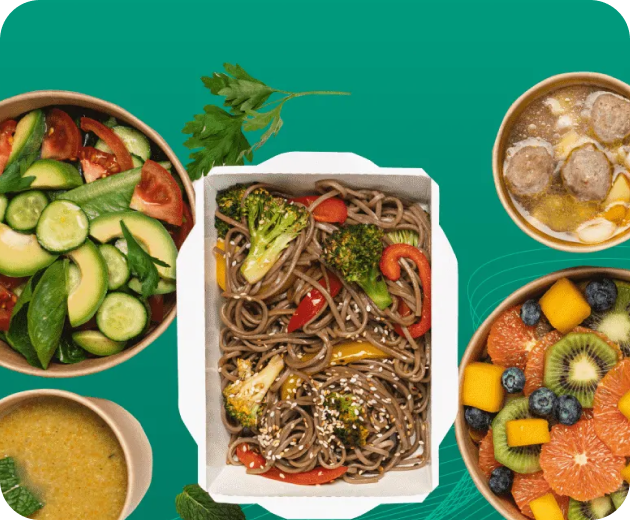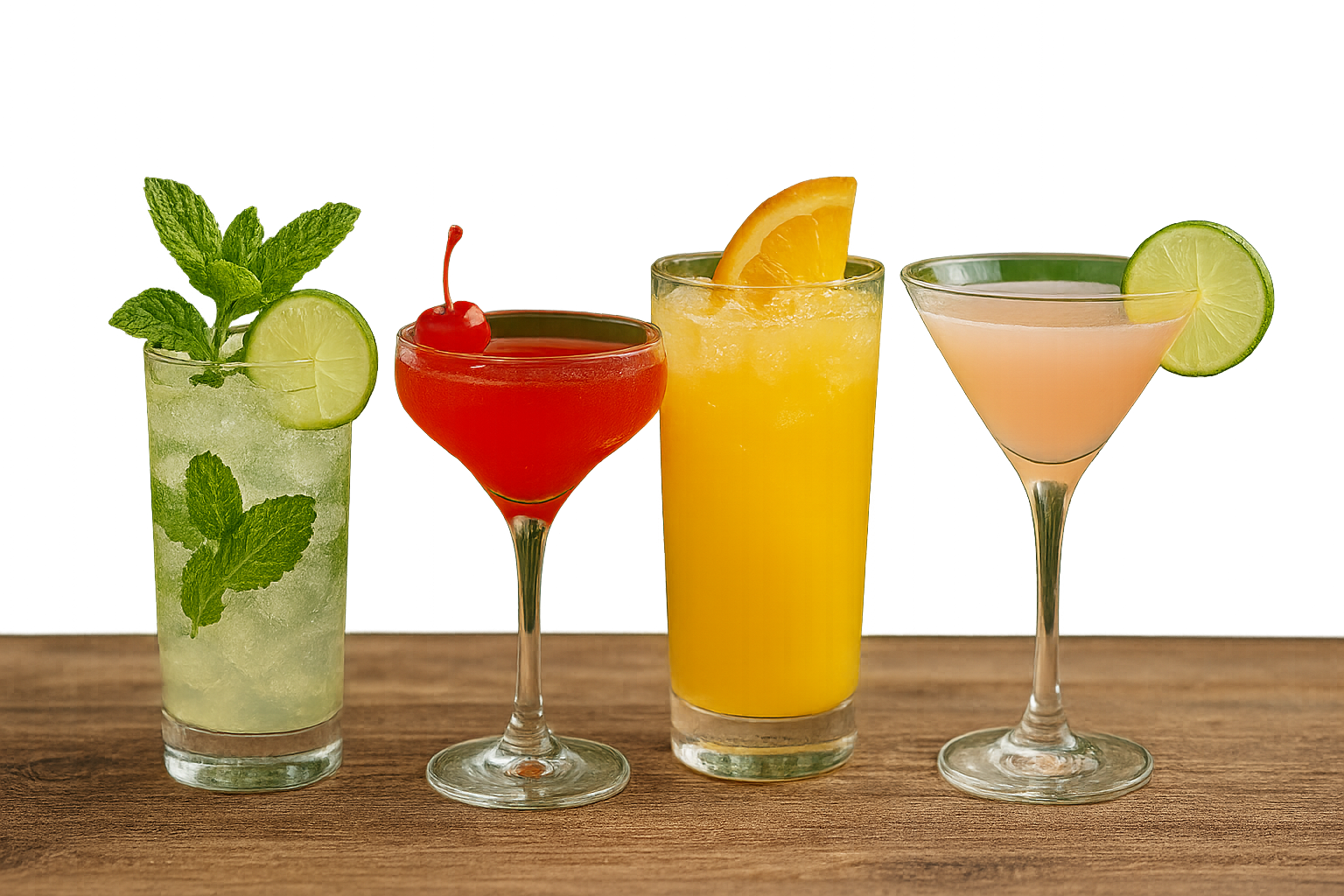CPG Marketing: The Full Guide
CPG marketing is vital for any consumer goods company’s success. It involves promoting and selling products through channels like traditional advertising, digital marketing, and retailer collaborations.
This article explores the key elements of CPG marketing and its importance for these companies.
What Is CPG Marketing?
CPG (Consumer Packaged Goods) marketing is a strategic approach that focuses on promoting and selling products that are consumed or used daily by consumers.
These goods include food, beverages, household cleaning products, personal care items, and more.
The main goal of CPG marketing is to create and maintain demand for these daily-use products by connecting with the target audience through various channels like advertising, promotions, packaging, and more.
Why Is CPG Marketing Important?
CPG marketing is crucial for success in the Food and Beverage industry. With many competitors offering similar products, a strong CPG marketing strategy is essential to stand out and attract consumers. This boosts brand awareness, customer loyalty, and ultimately, sales.
Furthermore, CPG marketing also helps businesses understand consumer trends, behavior, and preferences in the F&B industry.
With this information, companies can adjust their products and strategies accordingly to meet the ever-changing demands of consumers.
For example, with the rise of health and wellness trends, CPG companies have been focusing on creating products that are perceived as healthier and more natural.
Additionally, effective CPG marketing can also help companies navigate challenges such as changing consumer preferences, economic downturns, and fluctuating market conditions.
The Role of Technology in CPG Marketing
Technology has had a significant impact on CPG marketing in recent years. With the rise of e-commerce, social media, and other digital platforms, businesses now have more avenues to reach and engage with consumers.
This has also led to a shift in consumer behavior, with online shopping and social media influencing purchase decisions.
Moreover, technology has also enabled businesses to gather data and insights on their target audience, allowing for more personalized and targeted marketing strategies.
For instance, a prominent example of effective food marketing leveraging technology is the use of targeted social media campaigns by a well-known cereal brand.
By analyzing social media data, the brand was able to identify and target its primary consumer group effectively, leading to a significant increase in sales.
Get an inside look at the strategies powering top CPG brands. Discover how to innovate, adapt, and win with data-backed decisions that move fast—from product development to market execution.
Examples of CPG Marketing Strategies
Crafting a robust CPG marketing strategy involves a multifaceted approach that integrates various channels and tactics.
From traditional advertising to digital initiatives, the goal is to resonate with target audiences while maximizing ROI.
Here are some examples of successful CPG marketing strategies:
CPG Digital Marketing
In today’s digital age, CPG brands must harness the power of online platforms to connect with consumers.
Digital marketing strategies encompass social media campaigns, influencer partnerships, food content marketing, email marketing, and more, catering to the preferences of modern consumers.
CPG Mobile Marketing
Mobile marketing presents a unique opportunity for CPG brands to engage with consumers on the go.
Through mobile-optimized websites, apps, and targeted advertisements, brands can seamlessly integrate into consumers’ daily lives, enhancing accessibility and convenience.
Influencer Marketing
Influencer marketing for CPG involves partnering with popular social media influencers to promote products and create a buzz among their followers.
User-Generated Content (UGC)
Brands can leverage user-generated content on social media platforms, such as reviews, photos, and videos from satisfied customers, to showcase the effectiveness of their products.
Omnichannel Marketing
With the rise of e-commerce, brands can now reach consumers through various channels, such as their website, social media, and third-party marketplaces.
Augmented Reality (AR) Advertising
AR technology allows businesses to create immersive and interactive experiences for consumers, uniquely promoting their products.
Subscription-based Models
More CPG companies are adopting subscription-based models, where customers can sign up for recurring deliveries of their favorite products, providing convenience and ensuring brand loyalty.
Trends and Innovations
As consumer behavior and preferences are constantly evolving, CPG companies need to stay up-to-date with the latest CPG marketing trends and innovations. For example:
Direct-to-consumer (DTC) sales
This trend allows CPG companies to sell their products directly to consumers, cutting out the middleman and reducing costs.
Direct-to-consumer
With the rise of e-commerce and data analytics, businesses can personalize their marketing efforts for individual customers, creating a more personalized shopping experience.
Augmented Reality (AR) and Virtual Reality (VR) technology
CPG companies can use AR and VR technology to provide interactive and immersive experiences for consumers, such as trying on virtual makeup or visualizing furniture in a room before making a purchase.
Social commerce
Social media platforms are becoming more and more integrated with e-commerce, allowing for a seamless shopping experience for consumers and providing businesses with valuable data on consumer behavior.
Challenges
As with any marketing strategy, challenges always need to be overcome. In the case of CPG marketing, these challenges can vary depending on the product and target market.
However, there are some common challenges that most CPG marketers face:
Consumer Expectations: One of the major challenges in CPG marketing is meeting consumer expectations. With fierce competition, consumers demand quality, convenience, and value. CPG companies must innovate constantly to meet these high expectations.
Brand Differentiation: In CPG marketing, standing out from competitors is a key challenge. With similar features and benefits, differentiation is tough. Effective branding and positioning are vital to capture consumer attention in a crowded market.
Changing Consumer Behavior: E-commerce and technology have transformed consumer behavior. CPG marketers must adapt by integrating digital strategies like social media and influencer marketing into their plans.
Sustainability: Consumers are increasingly eco-conscious and seek products that align with their values. This challenges CPG firms to reassess manufacturing and packaging for sustainability. Yet, it’s a chance for brands to stand out and attract environmentally conscious consumers.
Retailer Relationships: For CPG companies, strong retailer relationships are vital. They secure shelf space and product visibility, but managing them is tough due to retailers’ agendas. CPG marketers must skillfully handle and collaborate with retailers for mutual benefit.
Data-Driven Marketing: As technology advances, data plays a crucial role in marketing strategies. CPG companies leverage consumer data to understand their audience, personalize messaging, and measure campaign success. This involves investing in data analytics and keeping current with the latest tools and techniques.
Continuous Innovation: In the fast-paced consumer landscape, CPG companies must innovate, keep up with trends, research new products and packaging, explore distribution channels, and adapt to consumer preferences.
Digital Transformation: Embracing digitalization and harnessing emerging technologies while ensuring data privacy and security remains a delicate balancing act.
Regulatory Compliance: Staying abreast of evolving regulatory frameworks, particularly in areas like labeling, advertising, and product safety, is essential for CPG brands to maintain compliance and consumer trust.
How CPG Marketing Analytics Can Drive Results
Harnessing the power of analytics is imperative for CPG brands to gain actionable insights into consumer behavior, market trends, and campaign performance.
By leveraging data analytics tools and techniques, such as food intelligence, brands can optimize marketing strategies, enhance targeting precision, and drive ROI.
CPG marketing analytics involves the systematic analysis of data to extract meaningful insights that inform marketing decisions and strategies within the consumer packaged goods industry.
It encompasses various metrics, including sales data, consumer demographics, market trends, and campaign performance metrics.
CPG marketing analytics empowers brands to make informed decisions, optimize marketing spend, and drive measurable results.
By understanding consumer preferences, market dynamics, and competitive landscapes, brands can tailor their strategies for maximum impact.
In addition, it can yield insights into consumer purchasing behavior, brand sentiment, product performance, competitive positioning, and emerging trends.
These insights enable brands to refine their marketing strategies, identify growth opportunities, and stay ahead of the competition.
Measuring CPG marketing analytics involves defining key performance indicators (KPIs), collecting relevant data through various sources, analyzing data using analytics tools and techniques, and deriving actionable insights to optimize marketing strategies and drive business outcomes.
Maximizing the Benefits of CPG Marketing Solutions
CPG marketing solutions offer a range of tools and strategies to help businesses effectively promote their products and increase sales. These solutions can include:
Data Analytics
By analyzing consumer data, CPG marketing solutions can provide insights into customer behavior, preferences, and trends to tailor marketing efforts.
Social media management
With the rise of social media platforms, managing multiple accounts and creating engaging content can be time-consuming for businesses.
CPG marketing solutions can help streamline this process and create targeted campaigns.
E-commerce optimization
CPG companies often sell their products through various online channels, such as their website, third-party marketplaces, and social media platforms.
Ecommerce for CPG companies can help optimize these channels to drive sales and improve user experience.
Loyalty programs
By offering personalized discounts, rewards, and exclusive offers to loyal customers, businesses can foster brand loyalty and encourage repeat purchases.
Influencer partnerships
Collaborating with influencers can help CPG companies reach new audiences and increase brand awareness. Marketing solutions can assist with finding the right influencer for a specific product or campaign.
Leverage the Benefits of Tastewise
Tastewise is a leading AI-powered food intelligence platform that provides CPG companies with real-time consumer insights and trend analysis.
By utilizing advanced data analytics, Tastewise can help businesses stay ahead of the curve and boost their marketing efforts by:
- Identifying rising food trends and preferences
- Analyzing consumer sentiment toward specific products
- Predicting future food trends based on current data
- Providing personalized targeting recommendations for marketing campaigns
- Helping businesses understand their target audience and their preferences better
With Tastewise, CPG companies can make data-driven decisions and create more effective marketing strategies to meet the ever-changing needs and desires of consumers.
Summing It Up
In conclusion, the landscape of CPG marketing is rapidly evolving, buoyed by advances in technology and shifts in consumer behaviors.
The integration of CPG marketing solutions, from data analytics to innovative platforms like AR and VR, as well as the pivot towards DTC channels and social commerce, are not just trends but necessary adaptations for companies aiming to stay competitive and relevant.
Leveraging these tools enables brands to connect with consumers on a more personal level, understand their needs and preferences, and ultimately drive sales.
As the industry continues to evolve, CPG companies must stay informed of emerging trends and utilize cutting-edge tools like Tastewise to thrive in a constantly changing market.
So why wait? Get ahead of the game with Tastewise and take your CPG marketing efforts to the next level!
FAQs
What is an example of CPG marketing?
An example of CPG marketing is a food brand promoting a new product across social media, TV ads, and in-store displays. They target specific demographics and may offer promotions or discounts to attract consumers.
How does CPG marketing differ from other types of marketing?
CPG marketing differs from other types of marketing in several ways.
- First, CPG products are essentials that require marketing for constant reminders due to their frequent purchase.
- Second, CPG marketing focuses on emotional connections with consumers to differentiate products with similar functions.
- Third, CPG marketing needs retailer collaboration for product visibility and accessibility, crucial for sales.
How much do CPG companies spend on marketing?
CPG companies typically allocate a significant portion of their budget to marketing, with expenditures varying based on factors such as brand size, market competition, and marketing objectives.
What does a CPG marketer do?
A CPG marketer is responsible for creating and executing marketing strategies to promote consumer packaged goods. This includes market research, identifying target audiences, developing promotional campaigns, and collaborating with retailers to ensure products are strategically placed in stores.
How important is digital marketing in the CPG industry?
Digital marketing is key in the CPG industry as more consumers shop online. CPG companies use it to reach wider audiences, analyze consumer behavior, and provide personalized ads and promotions.




